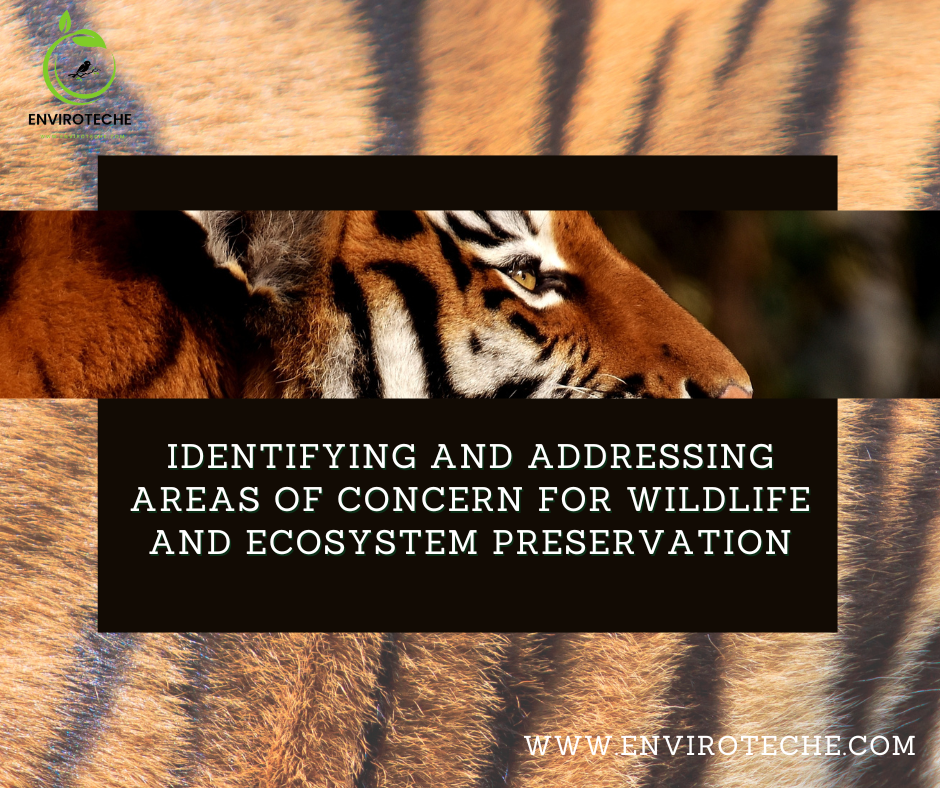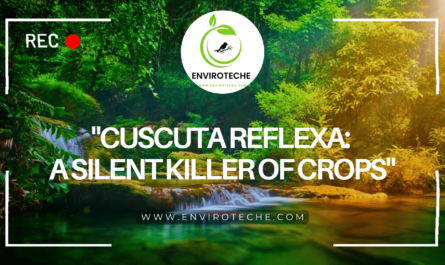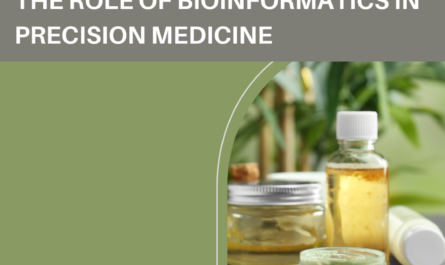
Identifying and Addressing Areas of Concern for Wildlife and Ecosystem Preservation
Irfan Haidri1, Muhammad Shahbaz1
1Department of Environmental Sciences, Government College University Faisalabad
Environmental pollution is a serious problem on a global scale that endangers ecosystems and wildlife. Harmful pollutants have been released into the air, water, and soil as a result of human activities like industrialization, deforestation, and the excessive use of chemicals. These pollutants affect both animal species and the complex web of interactions within ecosystems, with far-reaching effects on the delicate balance of nature.
This blog will explore the various ways that environmental pollution harms wildlife and ecosystems, emphasizing the need for ecosystem preservation.
Wildlife is seriously threatened by pollution in all its forms. Animals suffer from respiratory issues and have smaller lungs as a result of air pollution brought on by car exhaust and industrial emissions. Rivers, lakes, and oceans become contaminated by industrial waste discharge and agricultural runoff, which damages aquatic animals’ habitats and releases hazardous compounds into the water(Arora et al., 2018). Wildlife’s reproductive potential and general health are further impacted by soil contamination from inappropriate waste disposal and chemical use effect the ecosystem conservation.
Global ecosystems and its preservation are changing due to human-caused climate change, which also has a significant impact on animals. Natural cycles including migration, breeding, and hibernation are disrupted by rising temperatures, shifting precipitation patterns, and extreme weather events (Aryal et al., 2022). Numerous species experience distributional changes and possible population reductions as a result of their difficulty in adjusting to these quick changes. As a result of altered habitats and disrupted ecological interactions, climate change also has an impact on the availability of food for wildlife (Almond et al., 2020).
Air pollution disturb ecosystem preservation
Wildlife suffers greatly as a result of air pollution brought on by industrial pollutants, car exhaust, and the combustion of fossil fuels (Upadhyay, 2020). Animals that are exposed to airborne pollutants including sulfur dioxide, nitrogen oxides, and particulate matter may develop respiratory issues like asthma, chronic bronchitis, and decreased lung capacity. Birds, particularly those that depend on clean air for lengthy migrations, can experience breathing problems and navigational issues (Saurabh Sonwani & Vandana Maurya, 2019).
Acid rain, which falls on forests, rivers, and lakes, is also created as a result of air pollution. The pH of water bodies is lowered by acid rain, making aquatic life unwelcome. Particularly susceptible to the harmful impacts of acidification, which can result in dwindling population levels and diminished biodiversity, are fish, amphibians, and invertebrates (Dutta & Singh, 2021).
Water contamination effect ecosystem preservation
Wildlife on land and in water both face serious threats from pollution. Widespread pollution is brought on by the inappropriate dumping of chemicals, industrial waste, and agricultural runoff that enters rivers, lakes, and seas (Singh et al., 2020). Pollutants like plastics, heavy metals, and pesticides build up in the water and can enter the food chain, impacting organisms at various trophic levels. Fish, seabirds, and marine animals suffer from ingesting harmful compounds, becoming entangled in plastic trash, and having their habitats destroyed. Oil spills make the damage worse and can have disastrous effects on marine ecosystems and long-term ecological problems(Dineshkumar & Natarajan, 2020).
Soil Contamination
Agricultural practices that employ pesticides, herbicides, and chemical fertilizers carelessly as well as inappropriate waste management lead to soil degradation. These contaminants can linger in the soil for a long time, harming wildlife health and the ability to reproduce (Olowookere et al., 2018). The growth of plants can be impacted by contaminated soil, which can also reduce food sources and change the habitats of numerous animal species. Additionally, the buildup of heavy metals in the soil can be hazardous to animals, leading to deformities, weakened immune systems, and reproductive problems. The delicate ecosystemic balance is thus upset, endangering the survival of several species (Tiwari & Patle, 2021).
Habitat destruction and ecosystem conservation
Wildlife and ecosystems are further put in danger as a result of habitat destruction brought on by environmental pollution. Urbanization and industrial activity-driven deforestation not only reduce the amount of habitat that is available for many species, but they also impede critical ecological processes. The risk of human-wildlife conflicts rises as a result of the displacement of many different animal species, which frequently drives them toward human settlements(Bowman et al., 2013). In addition to destroying habitat, pollution has an impact on migratory patterns, breeding cycles, and resource availability, forcing wildlife to adapt or perish.
Important ecosystems like forests, wetlands, and grasslands have been lost as a result of deforestation, urbanization, and the expansion of agricultural land. As a result, many wildlife species have been forced to leave their native habitats and adapt to unfamiliar, frequently hostile environments. Habitat fragmentation isolates populations even more, restricts gene flow, and raises the possibility of genetic depletion (Hart, 2007). Ecosystem conservation is essential for habitat.
Sound pollution
Wildlife and their natural habitats are significantly disrupted by sound pollution, also known as noise pollution. The constant barrage of noise in our environment, caused by human activities like urbanization, transportation, and industrialization, has a significant impact on various animal species. Animals rely on sound for communication, mate selection, predator detection, and environment exploration.
However, excessive human-made noise can obscure crucial acoustic signals, making it challenging for animals to effectively communicate (Farooqi et al., 2020). This breakdown in communication may have negative effects on social interactions between species and reproductive success. In addition, loud noises from industrial, construction, and traffic activities can stress and worry wildlife, as well as alter their physiological processes.
Long-term exposure to loud noises can interfere with sleeping and feeding schedules and have an adverse effect on the health and wellbeing of animals as a whole. Sensitive species are especially susceptible to sound pollution, including birds, marine mammals, and some amphibians. For instance, sonar and ship noise can confuse marine mammals, resulting in stranding and deaths. Similarly, the constant noise from cities can interfere with bird feeding and nesting habits, which can have an impact on population dynamics and breeding success.
It is essential to put measures and ecosystem in place, such as sound barriers, noise reduction technologies, and the creation of quiet zones in sensitive habitats, to lessen the negative effects of sound pollution on wildlife. Additionally, promoting responsible urban planning and infrastructure development as well as spreading knowledge about how noise pollution affects wildlife can help create environments that are healthier and more harmonious for both people and wildlife (Herbert-Read et al., 2017).
Conclusion
The alarming effects of environmental pollution on ecosystems and its preservation demand immediate attention. The numerous negative effects that pollution has on our natural world are far too numerous to list here. The adoption of sustainable practices, the promotion of environmental awareness, and the implementation of strict regulations to reduce pollution are imperative for individuals, communities, and governments. Transitioning to cleaner energy sources, lowering waste production, putting in place efficient waste management systems, and promoting environmentally friendly agricultural practices should be the main goals for ecosystem preservation.
References
Almond, R. E. A., Grooten, M., & Peterson, T. (2020). Living Planet Report 2020-Bending the curve of biodiversity loss. World Wildlife Fund.
Arora, N. K., Fatima, T., Mishra, I., Verma, M., Mishra, J., & Mishra, V. (2018). Environmental sustainability: challenges and viable solutions. Environmental Sustainability, 1, 309–340.
Aryal, B., Gurung, R., Camargo, A. F., Fongaro, G., Treichel, H., Mainali, B., Angove, M. J., Ngo, H. H., Guo, W., & Puadel, S. R. (2022). Nitrous oxide emission in altered nitrogen cycle and implications for climate change. Environmental Pollution, 120272.
Bowman, D. M. J. S., O’Brien, J. A., & Goldammer, J. G. (2013). Pyrogeography and the global quest for sustainable fire management. Annual Review of Environment and Resources, 38, 57–80. Ecosystem Preservation
Dineshkumar, S., & Natarajan, N. (2020). Assessment of water quality status in the inland lakes of Coimbatore, Tamil Nadu, India. Ecosystem Preservation
Dutta, J., & Singh, P. P. (2021). Air pollutants and acid precipitation: impact on ecology and human health. In Multidimensional Approaches to Impacts of Changing Environment on Human Health (pp. 3–25). CRC Press. Ecosystem Preservation
Farooqi, Z. U. R., Sabir, M., Zeeshan, N., Murtaza, G., Hussain, M. M., & Ghani, M. U. (2020). Vehicular noise pollution: its environmental implications and strategic control. In Autonomous Vehicle and Smart Traffic. IntechOpen. Ecosystem Preservation
Hart, S. L. (2007). Capitalism at the crossoads: Aligning business, earth, and humanity. Pearson Prentice Hall. Ecosystem Preservation
Herbert-Read, J. E., Kremer, L., Bruintjes, R., Radford, A. N., & Ioannou, C. C. (2017). Anthropogenic noise pollution from pile-driving disrupts the structure and dynamics of fish shoals. Proceedings of the Royal Society B: Biological Sciences, 284(1863), 20171627. Ecosystem Preservation
Olowookere, B. T., Oyibo, O., & Oyerinde, G. T. (2018). Heavy metals concentration in dumpsites at Gwagwalada, Abuja: Implications on sustainable environmental management. Greener Journal of Soil Science and Plant Nutrition, 5(1), 1–4. Ecosystem Preservation
Saurabh Sonwani, S. S., & Vandana Maurya, V. M. (2019). Impact of air pollution on the environment and economy. In Air pollution: Sources, impacts and controls (pp. 113–134). CAB International Wallingford UK. Ecosystem Preservation
Singh, J., Yadav, P., Pal, A. K., & Mishra, V. (2020). Water pollutants: Origin and status. Sensors in Water Pollutants Monitoring: Role of Material, 5–20. Ecosystem Preservation
Tiwari, R., & Patle, T. (2021). EFFECT OF SOIL CONTAMINANTS ON SOIL HEALTH AND CROP PERFORMANCE. Ecosystem Preservation
Upadhyay, R. K. (2020). Markers for global climate change and its impact on social, biological and ecological systems: a review. American Journal of Climate Change, 9(03), 159. Ecosystem Preservation
Check Other Schlorships:

